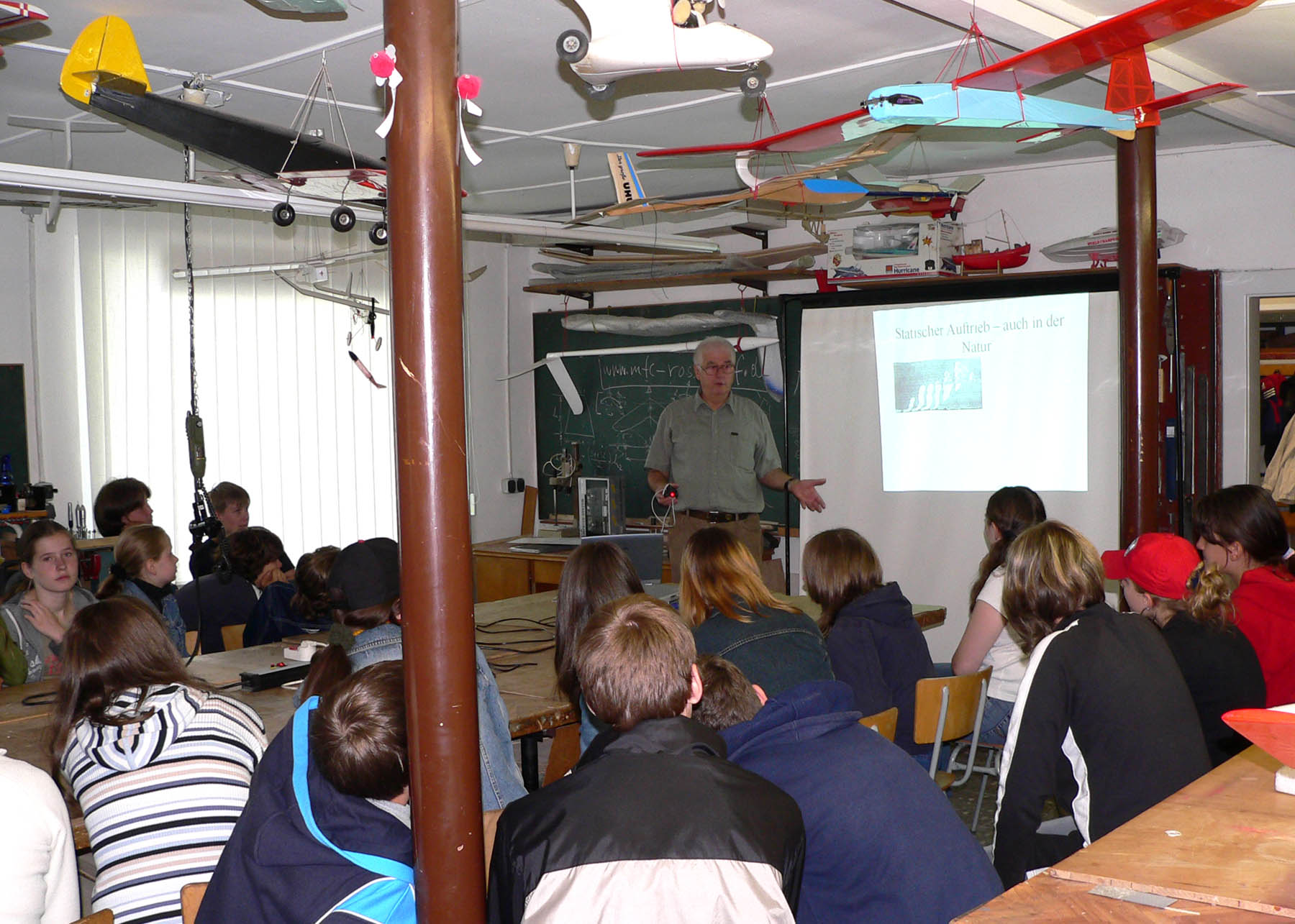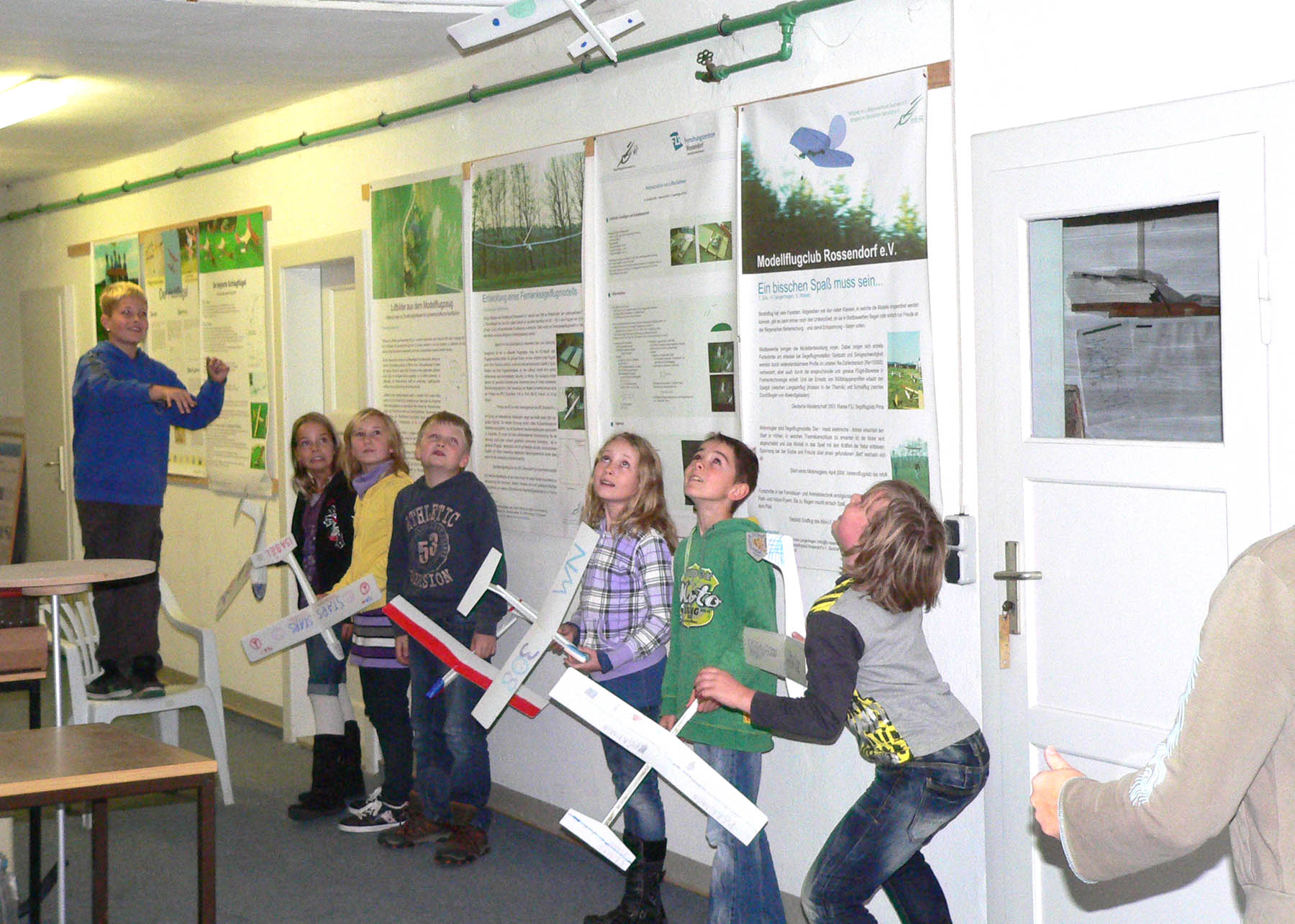The Aeromodelling and Aeronautics programme – in schools
Initially inspired by the event Aeronautics and School, which was organised by the German Airsports Aeroclub (DAeC) in Hamburg in 1992, the Rossendorf Aeromodelling Club has been successfully offering the Aeromodelling and Aeronautics programme to schools for more than 25 years. The objective is to provide students with the opportunity to discover the world of aviation and model aircraft in a fun and interactive way.
The programme itself is flexible: taking place over one or two days, depending on the students’ grade and the time available at the schools. When organised over two days, students can even try flying radio-controlled models themselves.

Day 1: Aviation milestones and a first glider
The first day starts with a journey through the fascinating history and physics of Aeronautics. Each important milestone in the development of aviation is accompanied by small experiments that aid understanding.
Afterwards, students learn how to build a simple glider made of styropor, which, depending on age, they can customise with colourful icons.
The most fun comes when students can actually test their models on a gliding path which corresponds to their weight and therefore to their airspeed. This is always an exhilarating moment.
In many cases, when back at school, teachers organise a contest over the largest flying distance at a suitable venue, such as the school’s gym.

Day 2: Test flights
On the second day, students first see how a model aircraft gains altitude thanks to the electrically driven propeller. Once it flies high enough, they take over the flight controls. At that point they are asked to fly simple figures, such as a full circle, laps with 180-degree curves and rectangles with 90-degree turns. If the weather permits and the model crosses a soaring region, they can even fly some circles and experiment with how the model ascends in the sky.
Thanks to this flight, students get the chance to experience the indescribable feeling of connectedness with a model aircraft. They also realise how much it takes to gain full control of a model in flight. Seeing so many delighted faces during and after this programme is a reward of its own.

Article written by Hans Langenhagen from the CIAM Education Sub-committee

